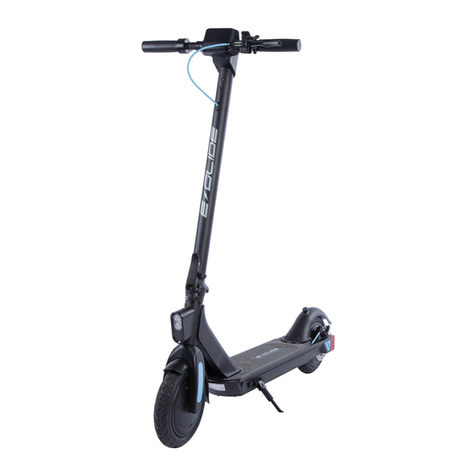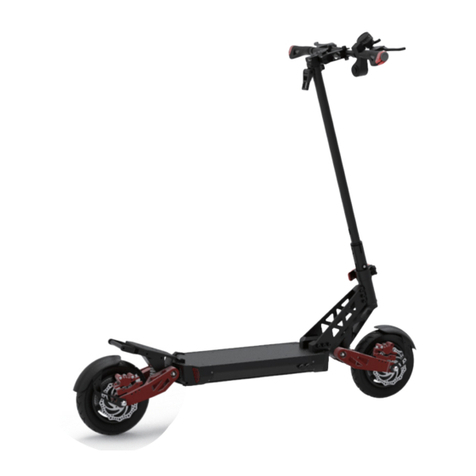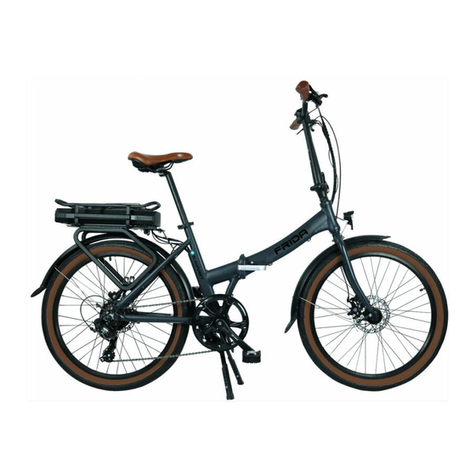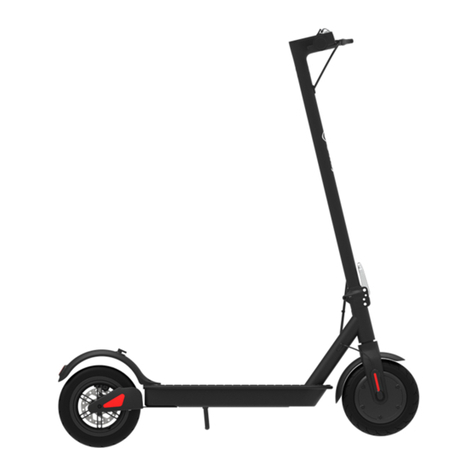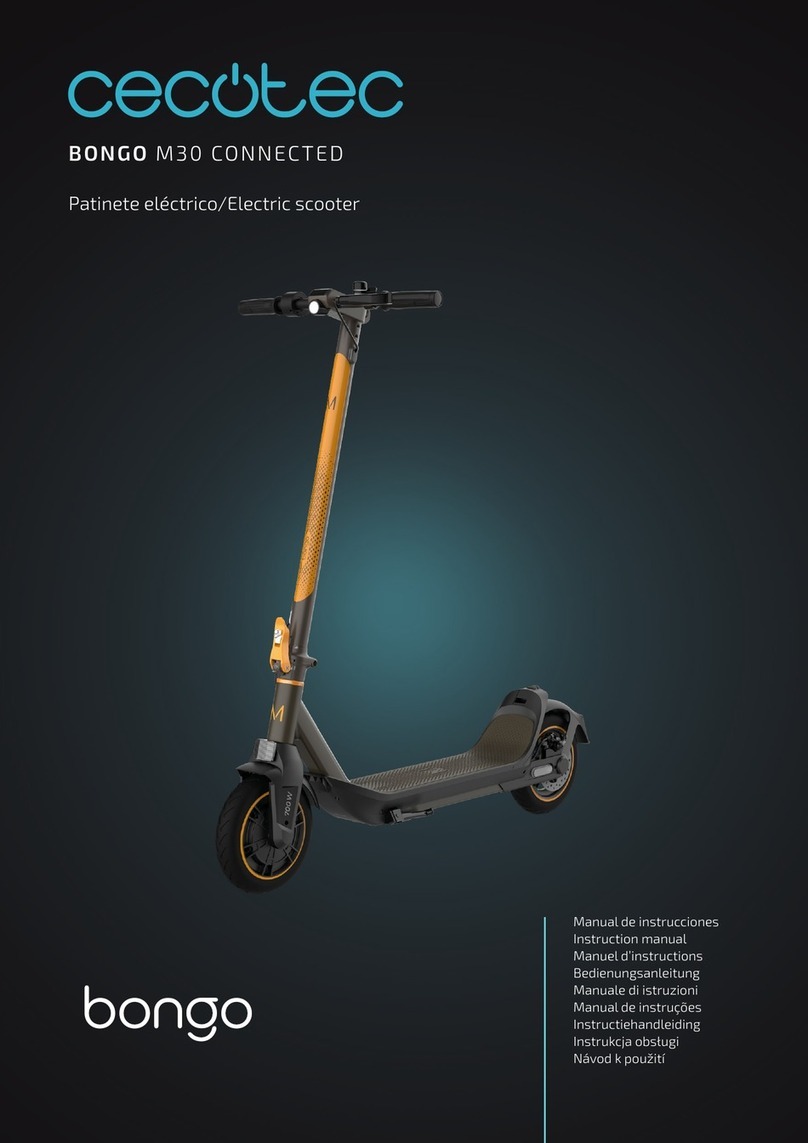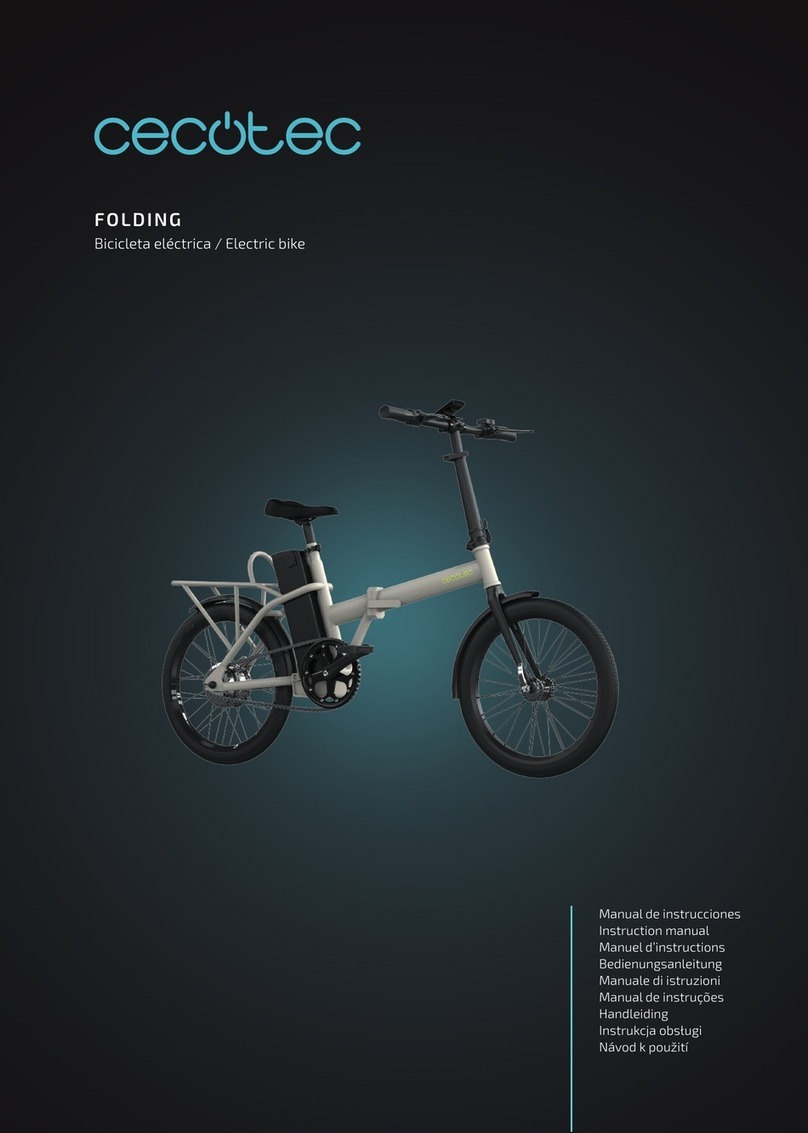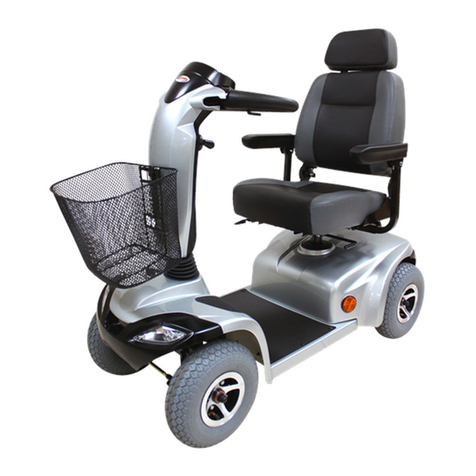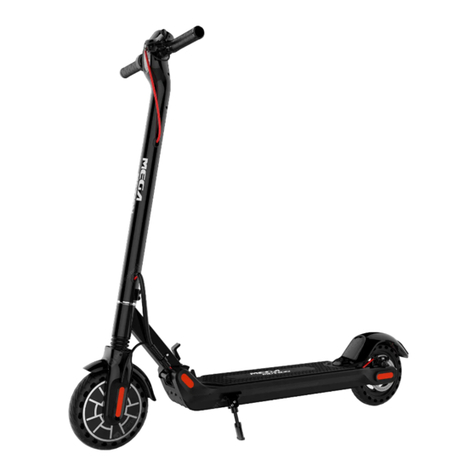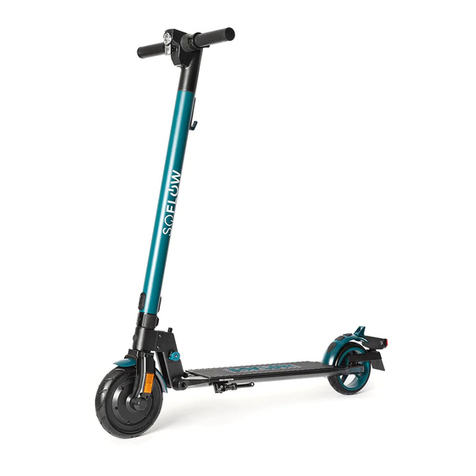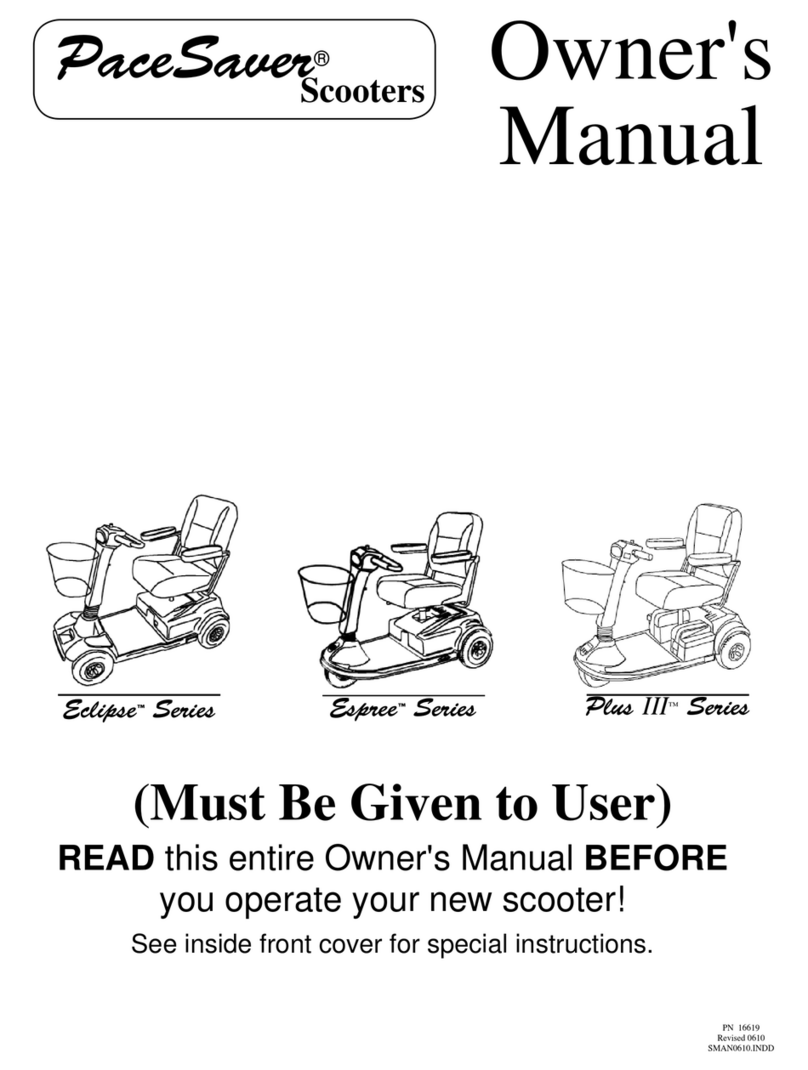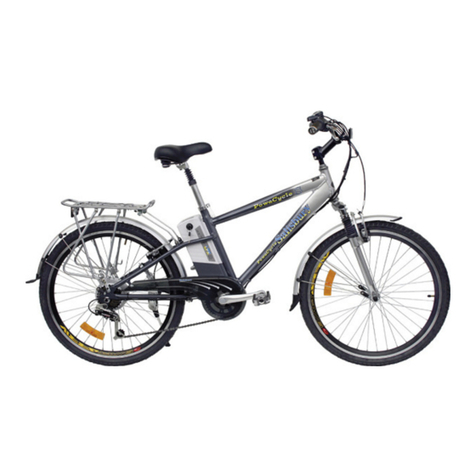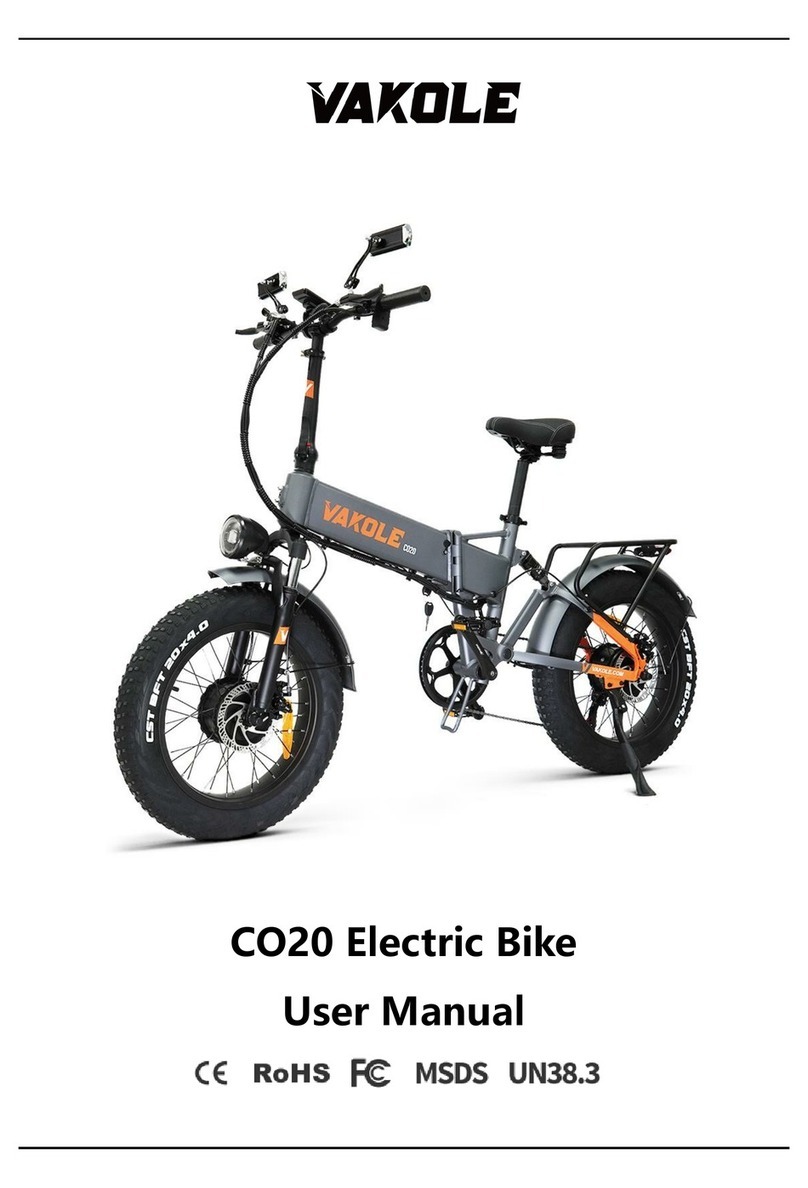E-Glide ST User manual

E-GLIDE ELECTRIC BIKE OPERATING INSTRUCTIONS
www.e-glidebike.com

General Warning
Note to Parents and Guardians
..........................................................................1
......................................................1
.........................................................................7
...................................................8
.................................................................................8
........................................................................8
....................................................9
................................................................10
......................................................................10
.................................................10
.......................11
Seat Adjustment
Suspension Seatpost Adjustment
Safety First
Mechanical Safety
Before Your First Motorized Ride
Riding an Electric Bike
Using the Throttle
Watching for Objects Around You
Best Practices for Extending Range and Battery Life
BASIC INSTRUCTIONS
........................................................................2
....................................................................2
...................................................................3
..................................................................5
......................................................................6
..............................................................................6
About the Battery
Charging the Battery
Installing the Battery
Removing the Battery
Storing the Battery
LED Indicator
TABLE OF CONTENTS
BATTERY MANAGMENT

............................................................................22
...............................................23
..................................................23
...................................................26
......................................28
.....................................................29
Tire Pressure
Tire, Tube, Wheel, and Axel Repair
Removing the Rear Motor Wheel
Installing the Rear Motor Wheel
Removing and Installing the Front Wheel
Motor Controller Replacement
TECHNICAL
......................................................................................11
......................................................................12
...................................................................15
..............................................................................15
Basics
Safety Guidelines
Wet Weather Riding
Night Riding
SAFETY
Maintenance Schedule
Torque Settings
Link to Assembly Instructions & Online Resources
Warranty
...............................................................30
.........................................................................31
..........................32
..................................................................................33
Parking, Storage, and Transport
Maintenance and Bicycle Care
...................................................20
.....................................................21

General Warning
Like any sport, bicycling involves the risk of injury and damage. By choosing to ride
a bicycle, you assume the responsibility for that risk, so you need to know, and
practice, the rules of safe and responsible riding and of proper use and mainte-
nance. Proper use and maintenance of your ebike reduces risk of injury.
Become accustomed to the bikes power control system before operating. The throt-
tle allows the bike to attain full power immediately. Inexperience riders should take
extra care when first applying the throttle. The pedal assist feature is also a power-
ful option and riders need to understand power settings and its operation before
first use.
A Note for Parents and Guardians
The E-Glide S/T is not designed for use by children. As a parent or guardian, you
are responsible for the activities and safety of your child. It is your responsibility to
BE SURE your child wears a helmet if you choose to let him ride the S/T, and that
he be familiar with its operation.
Always TURN OFF THE POWER before mounting or dismounting the bike.
Read the battery pack and detailed charging instructions in “Battery Management”.
You should fully charge the lithium battery according to the charging instructions
before your first ride.
Keep your bike indoors when not in use.
1

2
About the Battery
Your S/T lithium battery is made from Panasonic 18650 lithium cells, the same type
of cells found in Tesla EV’s. The battery is removable and can be charged on or
off the bicycle. The battery is sealed and maintenance free, you must never open
the battery as this will void the warranty. Each battery has a specific serial number
and barcode which can be found on the underside of the battery.
Charging the Battery
You will need to charge your battery prior to powering the bike for the first time.
The battery may be in hibernate state which could take over 8 hours for the initial
charge. Charge your battery as follows:
1. Lift the charging port rubber cover open at the bottom of the battery, exposing
the DC 2.5mm Power Jack (charging port). There is also a 5v USB power
source/communication port. Do not use the USB port other than to power a light or
charge a cell phone.
2. Plug the charger into a wall outlet. When ON the light will display green and
when charging, it will display red.
BATTERY MANAGMENT

3. Plug the DC 2.5mm Jack into the battery charging port, confirming a tight con-
nection. The charger light will display red as it starts charging. Upon being fully
charged (up to 8 hours initially), the charger will light green. Disconnect the char-
ger from the battery.
4. NEVER leave the charger connected to the battery after the battery is fully
charged. As the battery drains via the BMS (Battery Management System), the
charger will continuously charge the battery. This is not good for lithium batteries
and will decrease the life of the battery.
Installing the Battery
The S/T’s battery mounts on the downtube of the bicycle from the left side.
3

1.To mount the battery, you would first slide the base of the battery into the
frame’s lower docking mount (closest to the crankset)
2. Then move the battery sideways into the lock position.
The S/T’s battery mounts on the downtube of the bicycle from the left side.
4

3.The battery will be a tight fit. ALWAYS confirm the battery is locked in place by
pulling the top of the battery sideways. By pulling on the battery, this will assure
the battery has locked into position.
Removing the Battery
Insert key into battery lock, turn key and pull lever at same time, and pull battery
off of bike.
5

Storing the Battery
The Li-ion battery the S/T utilizes is the latest technology in Li-ion battery cells. It
is recommended that you do not store the battery in hot conditions. If the bicycle is
being stored indoors in a cool environment, the battery should be stored on the
bicycle in the “OFF” position. The battery should be kept away from fires or sparks
and also away from possible water damage. The battery is water resistant and not
water proof. Avoid wet conditions such as rain or cover your battery in the rain.
Store the battery in a cool dry place and charge to a maximum 80% every 90
Days.
LED Battery Indicator
There is an LED indicator on the battery itself. The indicator has 4 LEDs lights
displaying 4 levels of remaining voltage. When pressing the Battery ON / OFF
rubber panel switch at the top of the battery to the ON position, the indicator will
light 1, 2, 3 or 4 LED lights according to the remaining voltage in the battery. 4 LED
lights if 75% to full charge. The voltage needed to power the motor is a minimum
of 30V. If only 2 LED lights remain, the battery is now at > 50% depletion and must
be recharged. The battery also has a USB port for phone charging.
6

7
Bicycle fit It is very important your S/T is properly adjusted for comfort and to
avoid the possibility of losing control while riding. The saddle and handlebar can be
adjusted to allow for a safe and comfortable riding position.
Seat Adjustment
The ball of your foot, when resting on the pedal, should only allow for a slight bend
at the knee when seated. Raise or lower the seat tube for proper adjustment.
WARNING: The seat post includes a minimum insertion mark. It is important you
do not allow the seat post to be clamped below this mark. This mark must be
inserted into the frame pass the top of quick release clamp. If clamping below this
mark, it can cause the seat post to break, failure to follow this warning could result
in serious injury or death.
CAUTION: The seat tube quick release clamp must be checked for tightness to
ensure the saddle will not accidentally slide into the seat tube when riding. This can
cause a rider to lose balance and may result in a fall.
BASIC INSTRUCTIONS

Suspension Seatpost Adjustment
Your S/T had an adjustable suspension seatpost. Remove the seatpost. There is a
knob on the bottom of the seat post. Turn as marked for softer or firmer ride.
Safety First
It is important you follow your local bicycle laws but also it is important you ride
safely. Below are examples of understanding how to ride your new S/T safely.
Always wear an approved helmet when riding your bike, and follow the helmet
manufacturer’s instructions for fit, use and care of your helmet.
Mechanical Safety Check
Check the condition of your bicycle before every ride:
• Nuts, bolts and straps: Make sure nothing is loose. Lift the front wheel off the
ground by two or three inches then let it bounce on the ground. Anything sound,
feel or look loose? Do a quick visual and tactile inspection of the whole bike. Are
there any loose parts or accessories? If so, secure them. If you’re not sure, ask
someone with bike experience to check.
8

• Tires and Wheels: Make sure tires are correctly inflated
• Brakes: Check the brakes for proper operation. Squeeze the brake levers. Are
the brakes properly releasing? All control cables seated and securely engaged? Do
the disc brake pads grasp the rotors within an inch of brake lever movement? Can
you apply full braking force at the levers without having them touch the handlebar?
If not, your brakes need adjustment. Do not ride the bike until the brakes are
properly adjusted.
• Quick Releases: Make sure seat post and front wheel quick release levers are
properly adjusted and all are in the locked position.
• Handlebar and saddle alignment: Make sure the saddle and handlebar stem
are parallel to the bike’s center line, clamped and bolts tightened enough so that
you can’t twist them out of alignment. If not, align and tighten them.
• Handlebar ends: Make sure the left handlebar grip and right throttle grip are
secure and in good condition. If not, replace them.
WARNING: All Quick release levers must be closed and the clamps or axles tight.
One loose quick release lever can cause the rider to lose control and cause serious
injury or death.
Before Your First Motorized Ride
Before your first ride study this manual in its entirety. Make sure you are comfort-
able and confident when sitting on the bicycle. If an adjustment does not feel right
or something feels loose, check to ensure you are properly fitted to the bike and do
a mechanical safety check as explained in the previous section. Make sure you fully
charge your battery with the appropriate charger included.
9

Riding an Electric Bike
Riding an electric bike is like riding a non-electric bike but there are some differenc-
es to note. An electric bike is slightly heavier and requires more time to stop due to
higher traveling speeds. Your bike is also equipped with a powerful motor that
provides a boost noticeable when starting from a stop. The boost is exhilarating,
but you must be comfortable with the sensation before riding in crowded or con-
gested areas. To maximize battery life, assist with pedaling, engage throttle to 90%
or less and add considerable coasting with no throttle to your riding. Your battery is
a finite resource and proper riding techniques will prolong its distance per charge.
Using the Throttle
the half throttle works just like a motorcycle throttle. Twist for more power. The
throttle overrides the Pedal Assist System, instant power can be had at anytime.
Watching for Obstacles Around You
Your new S/T travels at higher speeds than most riders are accustomed to, when
compared to pedaling a traditional bicycle. It is very important you are aware of
your surroundings and obstacles which may appear near you. You must watch the
road surface you are traveling on which could cause the tires to slip or cause a flat.
Examples are soft shoulders, rocks, pot holes, uneven paths, grates, construction
sites. Due to the higher rate of speed when riding under motor power versus pedal-
ing, objects will advance into your path at a faster rate. Pay attention to other
riders in your area, automobiles, motorcycles, pedestrians, poles, intersections and
road signs to name a few. The S/T resembles a traditional bicycle and people walk-
ing, driving or standing may not realize you are on a motor powered vehicle and
misjudge your traveling speed.
WARNING: Hitting a pot hole, soft shoulder or other road deviation may cause you
to lose control, be thrown and cause serious injury or death.
10

Best Practices for Extending Range and Battery Life
• When riding under power, you can enhance distance by holding the throttle at
10% below full throttle.
• When riding under power, add as much non-powered coasting (similar to tradi-
tional pedaling) by releasing the throttle and allowing the bike to freely coast under
its own momentum. This will greatly increase the distance between charges.
• Familiarize yourself with throttling (10% below full), peddling and momentum
coasting to optimize the distance per charge.
• Pedal to assist the motor when climbing hills and accelerating from a stop.
Steep inclines will require pedaling by the rider to power over the hill as to not
OVERHEAT the motor.
• Avoid sudden starts and stops.
• Accelerate slowly.
11
Following are safety tips, it’s good to re- learn them, read them, BE SAFE!
The Basics
Below is a safety guideline according to the US Consumer Product Safety Commis-
sion in regards to riding a bike:
• Always wear a helmet to help prevent head injuries.
• Observe all traffic laws and signals, just as automobiles must do.
• Don’t ride double or attempt stunts.
• Ride near the curb in the same direction as traffic.
• Find alternate routes, rather than ride through busy intersections and heavy or
high-speed traffic.
• Walk -- don't ride -- your bicycle across busy intersections and left turn corners.
SAFETY

• Avoid riding in wet weather. When wet, handbrakes may require a long distance
to stop.
• Avoid riding in the dark. If you do, be sure the bike is equipped with a headlight,
a taillight and reflectors. Apply retro-reflective trim to clothing, or wear reflective
vests and jackets.
• Avoid loose clothing or long coats that can catch in pedals or wheels. Leg clips or
bands keep pants legs from tangling in the chain.
• Avoid crossing raised sewer grates.
• Regular maintenance is essential for safe riding. Refer to the maintenance recom-
mendations. If you do not have basic mechanical skills, an authorized dealer should
perform repairs and maintenance.
• Align (or "true") wobbly wheels for better control. Spokes also may need adjust-
ment.
• Replace all missing, damaged, or worn parts; for example, brake pads, chain-
guards, chain links, spokes, screws and bolts, handlebar grips.
• Tighten and/or adjust loose parts. 13
• Periodically inspect frame, fork, spindles and other components for cracking.
• Parts should be adjusted to manufacturer's torque specifications.
• Inflate tires to recommended pressure, and replace worn tires.
Safety Guidelines
Below are guidelines according to the NHSTA (National Highway and Traffic Safety
Administration) on bicycle safety.
• Protect Your Head: Wear a Helmet - Never ride a bicycle without wearing a
properly fitted helmet. Helmets are proven to be 85-88 percent effective in pre-
venting traumatic brain injury, the primary cause of death and disabling injuries
resulting from cycling crashes. Wear a helmet that meets the U.S. Consumer Prod-
uct Safety Commission (CPSC) standard (see inside of helmet for presence of a
label).
•Assure Bicycle Readiness: Ensure Proper Size and Function of Bicycle - Make
sure the bicycle fits you: Stand over the top of the bicycle – there should be mini-
mum 3 inches of clearance from the frame bar. Seat height — as previously men-
tioned, with the ball of your foot on the pedal, the fully extended leg should have a
slight bend. Check all parts of the bicycle to make sure they are secure and working
well: The Handlebar should be firmly in place and turns easily. The wheels must be
straight and secure; the quick release rear axle must be secured.
12

• Stop It: Always Check Brakes Before Riding - Always control your speed by using
your brakes. Apply the rear brake slightly before the front brake. Always keep your
brakes adjusted. If you cannot stop quickly, adjust your brakes. When your hand
brake levers are fully applied, they should not touch the handlebars. Ride slowly in
wet weather and apply your brakes earlier, it takes more distance to stop.
• See and Be Seen: Wear clothes that make you more visible. Always wear neon,
florescent, or other bright colors when riding a bicycle.
• Avoid Biking at Night: It is far more dangerous to bicycle at night than during
the day. The ST requires LED lights for night time riding. If you must ride at night,
you should also do the following: wear retro-reflective clothing or material, not just
white or florescent, especially on your ankles, wrists, back, and helmet. Only ride in
areas familiar to you. Brightly lit streets are best. Always assume you are not seen
by a driver. Children should NOT ride at night.
• Go With the Flow: The Safe Way is the RIGHT Way - Ride on the right side in a
straight, predictable path. Always go single file in the same direction as other vehi-
cles. Riding against traffic puts you where motorists don't expect you. They may
not see you, and may pull across your path, or turn into you.
• Check for Traffic: Always Be Aware of the Traffic Around You - Over 70 percent
of car-bicycle crashes occur at driveways or other intersections. Before you enter
any street or intersection, check for traffic. Always look left-right-left, and walk
your bicycle into the street to begin your ride. If you are already in the street,
always look behind you for a break-in traffic, then signal before going left or right.
Watch for left or right turning traffic.
•Learn Rules of The Road: Obey Traffic Laws - Bicycles are considered vehicles.
Bicyclists must obey the same rules as motorists. Read your State drivers hand-
book, and learn and follow all the traffic signs, laws, and rules for operating a vehi-
cle on the road. Always signal your moves. Be courteous to pedestrians and other
vehicle operators. Never wear headphones while riding as they impair your ability
to hear traffic. Become familiar with the accommodations that are available for
bicyclists in your area. These include bicycle lanes and routes as well as offroad
paths. Take advantage of these whenever possible.
13

• “Drive” with Care: Share the Road - When you ride, consider yourself the driver
of a vehicle and always keep safety in mind. Choose to ride in the bike lane, if
available. If the roadway or bike lane is wide, ride to the right; if the lane is narrow,
you may choose to ride in the middle of the lane. Take extra precautions when
riding on a roadway. Bicycles are smaller than automobiles, and don’t protect the
operator like an automobile. You should: Make eye contact, smile, or wave to com-
municate with motorists. Courtesy and predictability are a key to safe cycling; be
considerate and aware of motorists and pedestrians. Learn to anticipate their
actions. Remember, pedestrians have the right of way; Ride far enough away from
the curb to avoid the unexpected from parked cars (i.e. opening doors or drivers
pulling out without checking); Keep control of your bicycle: look behind you while
maintaining your bicycle in a straight path; be able to ride with one hand on the
handlebars and signal a turn. (Practice these skills in a parking lot); Always look
over your shoulder, and if possible, signal before changing lanes; Make sure that
books, clothes, and other items are securely attached to the bicycle or carried in a
backpack; and Use bells, horns, or your voice to alert pedestrians and bicyclists
that you are approaching or passing.
• Stay Focused: Stay Alert - Never wear headphones; they hinder your ability to
hear traffic. Always look for obstacles in your path (potholes, cracks, expansion
joints, railroad tracks, wet leaves, drainage grates, or anything that could make you
fall). Before going around any object, scan ahead and behind you for a gap in traf-
fic, signal your intentions to move, and then follow through with your intentions. Be
aware of the traffic around you. Ride defensively. Use extra care when riding in wet
weather, ice, frost, or snow. Slow your speed and allow extra time and space to
stop. Use extra care when crossing bridges which are extra slippery under wet
conditions. Use caution when crossing a railroad track; cross tracks at a 90-degree
angle and proceed slowly.
14

Wet Weather Riding
Whenever possible, you should avoid riding your bicycle in the rain. Riding a bicycle
in the rain is like driving a car in the snow. You will not be able to stop as fast and
must leave a larger distance between you and the obstacles around you. Your
brakes will not work as efficiently when they are wet. You will not be able to turn as
sharp without the danger of slipping. You must also ride away from or be cautious
around painted lines, pot holes, sewer or drain grates, rail road crossings, bridges,
wet leaves and any other area where a slippery surface can appear with water.
Keep an eye out for puddles and turn your lights on if you have them. If you live in
an environment where rain riding is expected, you should install front and rear
fenders if you have not already done so. Use a cover for your bicycle if leaving it
outdoors. Extensive rain can seep into the controller and battery and cause water
damage.
Night Riding
Almost anywhere in the world today, bicycle night riding requires front and rear
lights on your bicycle. Your S/T has built in headlight and taillight, that runs off the
main battery. Always wear retro-reflective clothing or material, not just white or
florescent, especially on your ankles, wrists, back, and helmet. Only ride in areas
familiar to you. Brightly lit streets are best. Always assume you are not seen by a
driver. Children should NOT ride at night.
15
First Motorized Ride
When you buckle on your helmet and go for your first familiarization motorized
ride on your new bicycle, be sure to pick a controlled environment, away from cars,
other cyclists, obstacles or other hazards. Ride to become familiar with the brake
levers against throttling, variable throttle performance while pedaling your new bike
and not pedaling. The first motorized ride should be initially pedaling and then
slowly pressing down on the throttle to feel the engagement of the HUB motor.
Familiarize yourself with the sensation of power.
RIDING YOUR S/T

• Familiarize yourself with the braking action of the bike. To test the brakes at slow
speed, shift your weight toward the rear and gently apply the brakes, rear brake
first. Sudden or excessive application of the front brake could pitch you over the
handlebars. Applying brakes too hard can lock up a wheel, which could cause you
to lose control and fall.
• Your bike has a front suspension system, familiarize yourself with how the sus-
pension responds to braking application and rider weight shifts.
• Check out the handling and response of the bike; and check the comfort
• Start-up Procedure/LCD Basics/Lights
The LCD Screen has four buttons, ON/OFF, SET, UP, AND DOWN
16

Normal Operation Screen Illustration
• Hold on/off and LCD will go on. This will also turn on the electric bike system. The
LCD will provide Normal Default screen and will display:
Current Display - Shows discharge current, each mark is 2amps
Riding Mode Selection - There are three modes for riding with arrow selection,
Power, Normal, and Eco. The default option is Normal.
Riding Speed - Displayed in MPH or KM/H
PAS Level - Displays Pedal Assist Levels 1 through 5
Battery Current/Battery Level - BMS displays battery voltage, and battery level.
Odometer - Displays total distance traveled
17
Table of contents
Other E-Glide Scooter manuals
